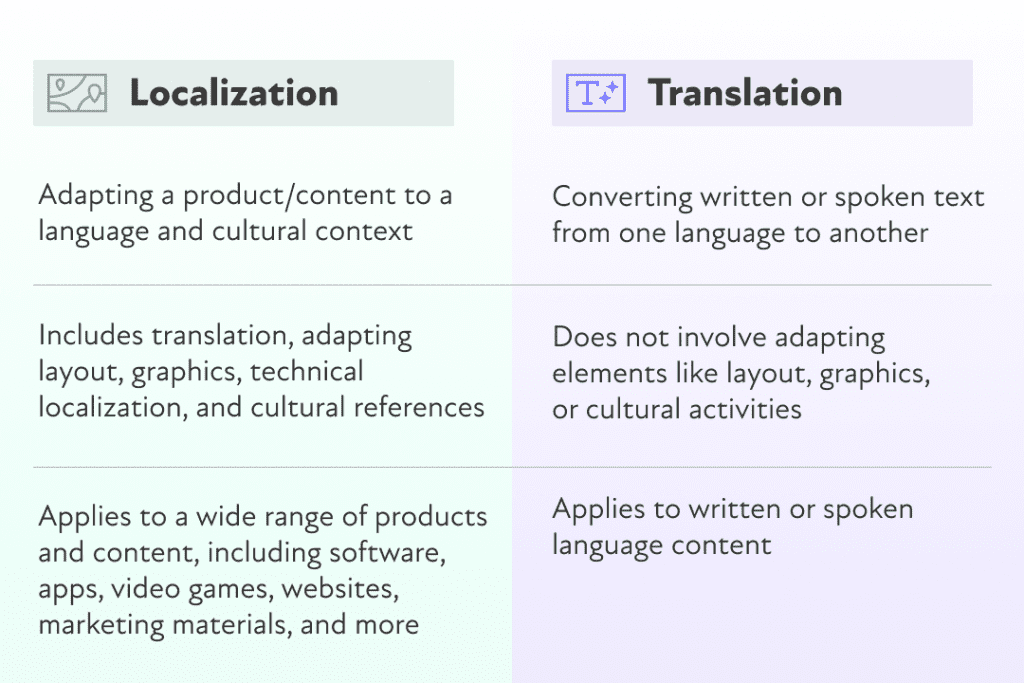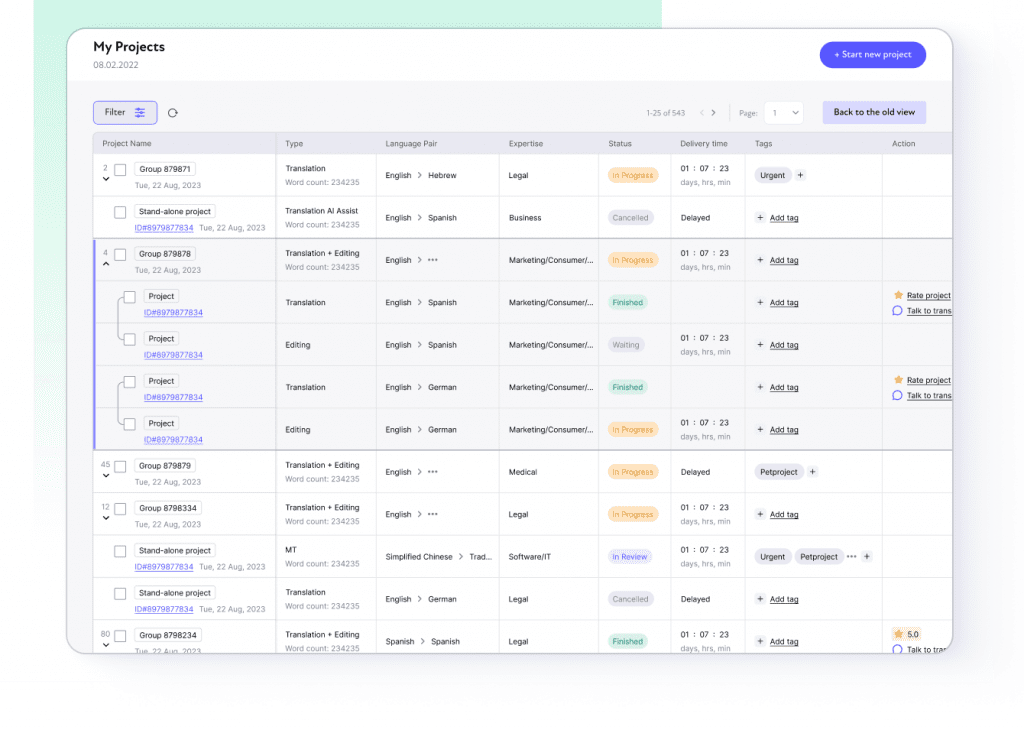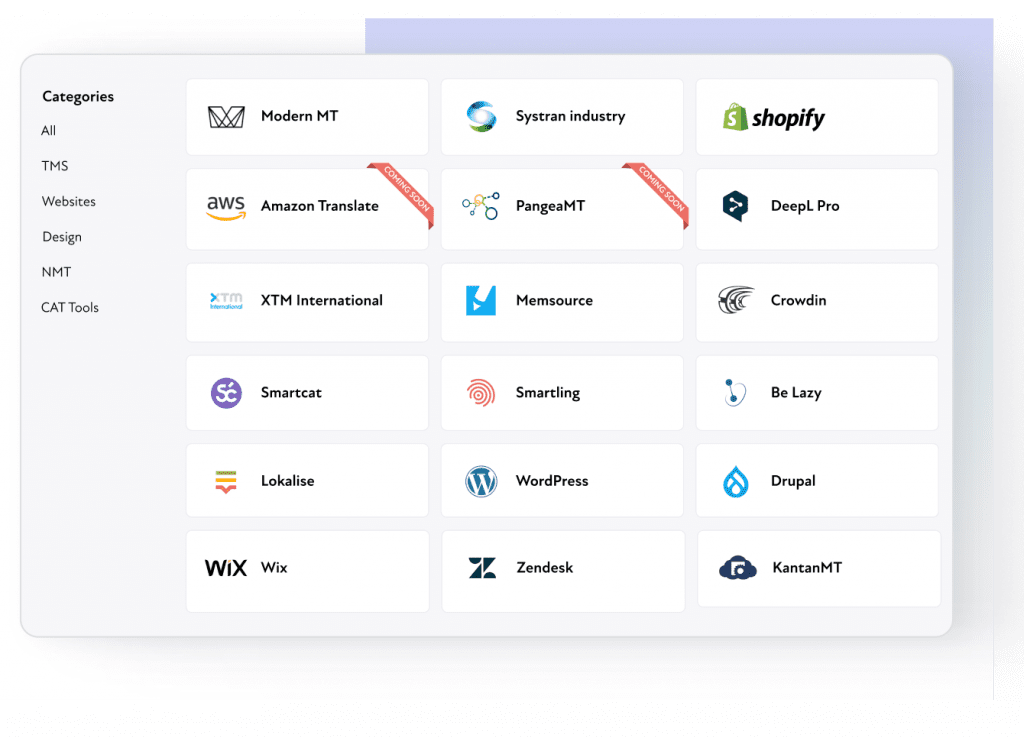Corinne Sharabi
Corinne is the Social Media and Content Lead at BLEND. She is dedicated to keeping global business professionals up to date on all things localization, translation, language and culture.


If you’ve already outgrown your existing market, it’s time to start looking at new ones. No matter how good your product is, you can’t simply transplant it from one territory into another and expect consumers to engage with it. If you want to strike the right note with consumers, you need to be offering products and content in their own language. However, translation alone won’t do it. If you want to deliver a first-rate experience to customers and achieve success in international markets, you need to start thinking about localization.
The localization process is rather involved. As well as translation, you may need to retool every other element to ensure it’s in line with the cultural requirements of your target market. Only then do you stand a chance at resonating with non-native users. It’s rarely something that businesses can handle alone. Fortunately, localization services, like BLEND are on hand to help.
Are you looking to explore the potential of new markets? Perhaps you’ve already established yourself in a new territory, but your current localization strategy has fallen flat. To make more of an impact, it’s worth seeking out the support of software localization services and mobile app localization. Need more convincing? Below are just a few scenarios where a localization might be the way forward.
Do you plan on moving into new markets in the future? It’s never too early to start thinking about a localization strategy. A localization partner can help you prepare your product for non-native users, saving you from having to rely on time and resource-intensive waterfall localization. This way, you’ll be able to strike the right note with consumers instantly, boosting credibility and securing brand loyalty in saturated markets.
Have you already expanded into a new market? Your localization journey is far from over. If your current strategy isn’t bearing fruit, it’s time to call in the services of an experienced localization service provider. A localization partner can help you identify how your product needs to be adapted further to address the changing appetites of native consumers. You achieve maximum growth potential while ensuring your brand remains as competitive as possible.
Continuous localization is essential if you want to hold onto acquired consumers in new markets. Without investing in user experience, you’ll struggle to turn one-time customers into loyal brand advocates. To reduce churn rate, make sure the experience you’re creating for users is as familiar and intuitive as possible. Consumers want to feel as though a product has been designed for them, not that they’re nothing more than an afterthought.
Expanding into multiple territories? While you’ll need to tailor your product to each market, your brand identity needs to remain consistent. Maintaining consistency can prove difficult without the insights of an experienced localization service provider. With the right partner at your side, you can moderate your messaging and reach new users, without sacrificing your brand identity.

Many people assume that translated content from one language into another is sufficient when expanding into new markets. However, translation is just one part of the localization puzzle. Localization is a far more exhaustive process, taking into account the impact of visual elements, user preferences, and cultural nuances.
A translation project is no small undertaking. However, it’s a walk in the park compared to the localization process. With translation, you’re simply replacing the source text with content in the same language as your target market. High-quality translations should replicate the tone of the original content while preserving its meaning. Unfortunately, some translations fall far short of this, with content that’s a poor match to the original and lacking in context.
Although it can be resource-intensive, localization can overcome the shortfalls found with translation. Whether it’s something as simple as website localization, or a more involved software or app localization project, the process does involve translation, but this is just the tip of the iceberg.
Along with translation, all other elements are considered and potentially adapted to meet the cultural requirements of a new market. Date and time formats, currencies, and symbols may all need to be adjusted. Users of some languages read from right to left, rather than left to ride, calling for a change to layouts. There’s also the issue of text expansion and contraction. No two languages use an identical amount of characters to get the same message across. If the difference is significant enough, major changes to the original product may be required.
Localization can also have implications for translation itself. Sometimes, it may prove impossible to accurately replace the tone of the original messaging thanks to cultural differences. More appropriate idioms and expressions familiar to new users can be incorporated instead. (Read more about the differences here)
Ready to start making waves in new markets? You’ll need the right localization platform at your disposal. These advanced software solutions will optimize the translation and localization process, ensuring no single element is neglected. You’ll encounter several types of localization platforms, ranging from standard translation management systems to accessible cloud-based solutions for maximum convenience.
Not sure where to start? Below are just a few of the key questions you should be asking when selecting a suitable localization platform.
If you’re pulling content from multiple sources, you’ll be encountering a wide variety of file formats. The best localization platforms should be able to accommodate all of these, without running into any compatibility issues.
You might only require localization support for software development at the moment, but it’s a good idea to choose a solution that caters to multiple platforms. To help with future localization efforts, pick something that offers support for various platforms.
Regardless of whether you’re relying on human translators or bringing machine translation into the mix, project references will increase consistency. Translation glossaries let you underline preferred translations across all terms, while translation memory makes a note of regularly encountered phrases. Having these to hand can significantly improve productivity.
You’ll be dealing with strings of content if you’re localizing software. To make the localization process as streamlined as possible, you’ll need a solution that offers string management as standard.
There’s no point in choosing a localization platform that comes with a steep learning curve. The more intuitive an interface is, the quicker your teams will be able to fully utilize it. While some features will require more knowledge than others, a localization platform shouldn’t feel alien to those with little technical experience.
Any localization project depends on multiple teams and disciplines. With a dispersed workforce, collaboration tools are even more essential, allowing teams to work seamlessly, regardless of where they’re based. Look for a solution that offers a full range of tools. You should be able to assign tasks, track progress, review completed translations, and provide feedback in real time. Automating all of these tasks not only saves time, it also dramatically reduces human error.

While there are many aspects to successful localization, content translation remains a core component. As such, you’ll want a localization platform that offers first-rate translation services. Whether you’re looking to translate marketing materials or software elements, a good localization platform should accommodate this. Even if you only have eyes on a single new territory, it’s worth looking for a solution that supports many different language pairs. This way, you’ll be all set to expand further once you cast your gaze toward more untapped markets.
Managing a localization project is no small feat. To increase your chances of success, choose a platform that offers project management tools. Look for something with a user-friendly dashboard that offers a snapshot view of all key processes and tasks. This will improve project collaboration and strengthen communication between all of those involved in localization.
No matter how many resources you invest in localization, quality can only be determined by testing your content. A high-quality localization platform will offer users a suite of quality assurance tools to help with this. Look for platforms that quickly identify any inconsistencies or issues with formatting. This way, you can be confident that the finished article is as ready as it can be when it reaches the end user.

Ideally, a localization platform should offer integration capabilities as standard. Whether it’s a content management system or something more specific, integrations make the entire process far more efficient, saving you time and money.
Are you keen to make a mark in a new territory? Perhaps you’ve already established yourself in a new market, but are falling way behind the competition. In either case, your localization strategy sounds like it needs work. With a localization partner like BLEND, you can achieve the global growth you’ve always dreamed of.
BLEND’s platform provides you with an all-in-one localization solution that brings together human insight, machine translation, and other cutting-edge tools. On hand to help with every stage of localization, you can open translation projects in 120+ languages, automate your workflows, maintain clear lines of communication, and more. Our platform can also be integrated with a huge selection of content and translation management systems, not to mention most major CAT tools. Do you have even grander plans for the future? With BLEND, scalability comes as standard.
Ready to learn more about how BLEND can help you with localization? Get in touch with the team today.
What our customers are saying